Seven Trends in Aquarium Design
CambridgeSeven experts dive into modern aquarium trends.
View Post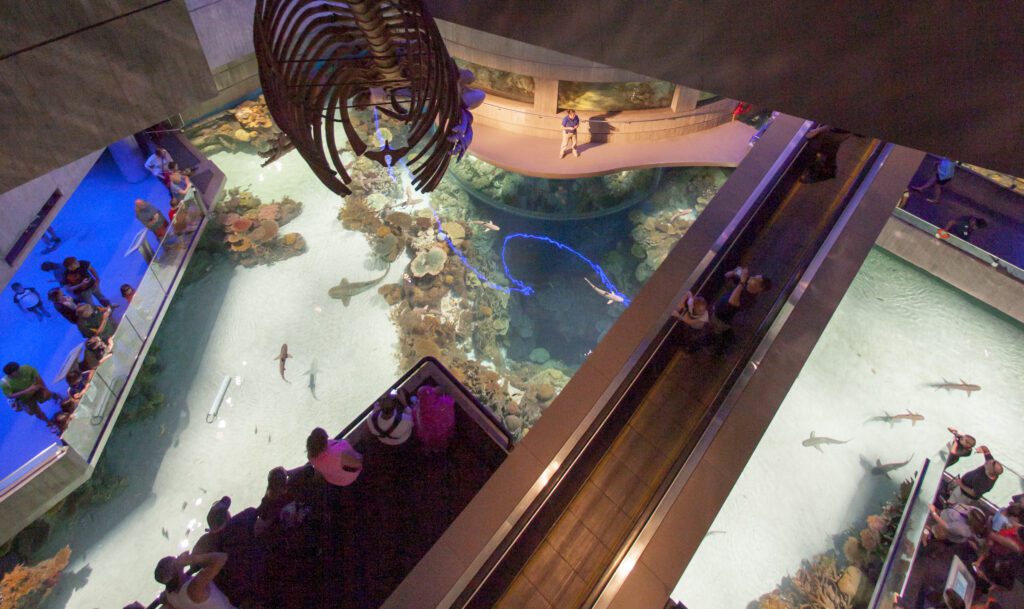
Aquarium design and marine exhibits have gone through amazing changes over the past half century since CambridgeSeven’s seminal project, the New England Aquarium. From research and aquatic care to visitor expectations to sustainable practices, as the aquarium’s role has evolved so, too, have the designs. Reflecting on the top design trends we identified several years ago, we wondered how those trends have held up and what’s on the minds of our aquarium designers today. The following is an excerpt from a conversation we had with in-house experts Justin Crane, Peter Sollogub, Sharon Clarke, Paul Herbert and Sumi Fasolo.
Q: We’ve written a lot about how aquariums are adopting more sustainable practices in their water usage and energy consumption. Can you give us some examples where you’ve seen this having measurable impacts?
Sharon: Something I’ve learned recently about sustainability within the Aquarium industry is a new organization that has been formed to specifically address issues of conservancy and sustainability, the Aquarium Conservation Partnership. Something specific that I found fascinating coming out of this new organization is the Sustainable Feed Commitment which, among other things, encourages aquariums to build aquaculture programs to rear fish in-house and reduce the need to collect them from the wild. This goes for both fish meant for display in the aquarium tanks as well as “feed fish” that are fed to exhibit fish and mammals. It is an example of how the sustainability efforts are becoming broader and more holistic, going beyond just carbon footprint.
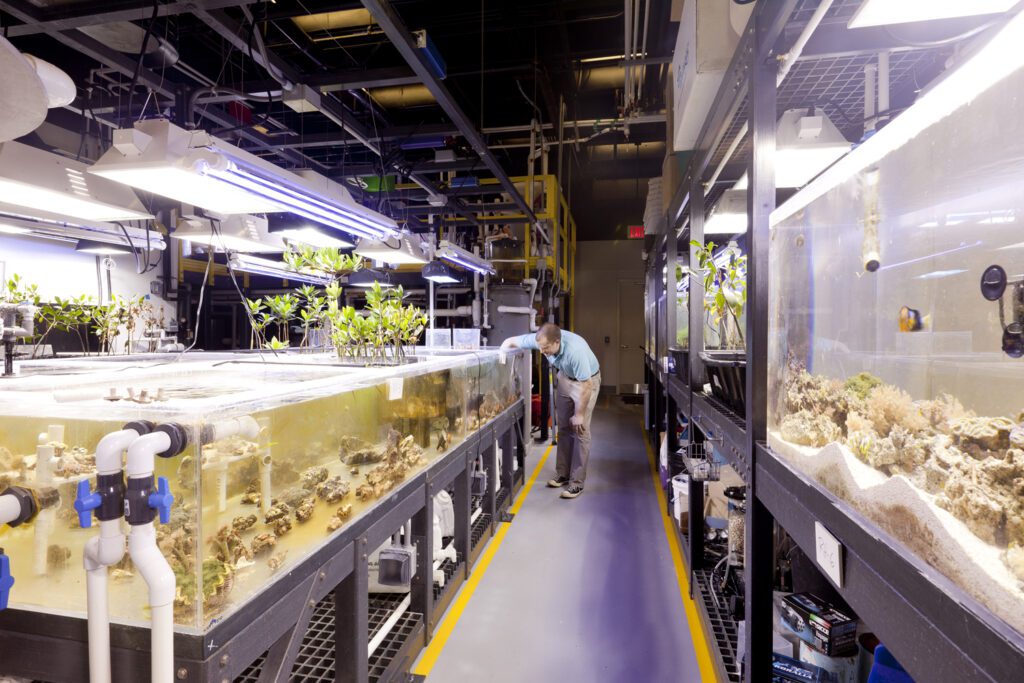
Q. Aquariums aren’t always situated along waterways but in those instances where they are, how is climate change impacting their facilities and long-range plans?
Justin: Many Aquariums are experiencing climate change first-hand, with sites that now flood more regularly than they did in previous decades. While their conservation programs, such as those run by the New England Aquarium’s Anderson Cabot Center for Ocean Life, are focused on mitigating the effects of climate change through research, policy, and education, their campuses must also respond directly to the threat of rising sea levels. As a result, aquariums are partnering with their neighbors and municipal agencies to develop plans for community protection. On their own sites, institutions are building green infrastructure – such as floating islands and textured ecological seawalls– that will mitigate wave action while draining and filtering floodwater. Within buildings, they are reinforcing basement structures against the lateral loads of higher water levels while re-locating critical working equipment and exhibits out of spaces that are below projected 2070 flood levels. As the Gulf of Maine is one of the most rapidly-warming ocean basins in the world, oceanfront institutions in New England are at the forefront of conservation action and resiliency design.
Q. Attention is being paid to humane practices and our responsibility to protect sea life, from aquatic mammals to coral reefs. What have you seen that gives you hope? What still needs to be done?
Justin: Humane practices have rightly received much more attention over the last 10-15 years. One example is our work restoring the New England Aquarium’s Giant Ocean Tank, which improved the tank’s Life Support System and replaced all lighting to energy-efficient LEDs that would change through the day and year to more closely align with natural circadian rhythms.
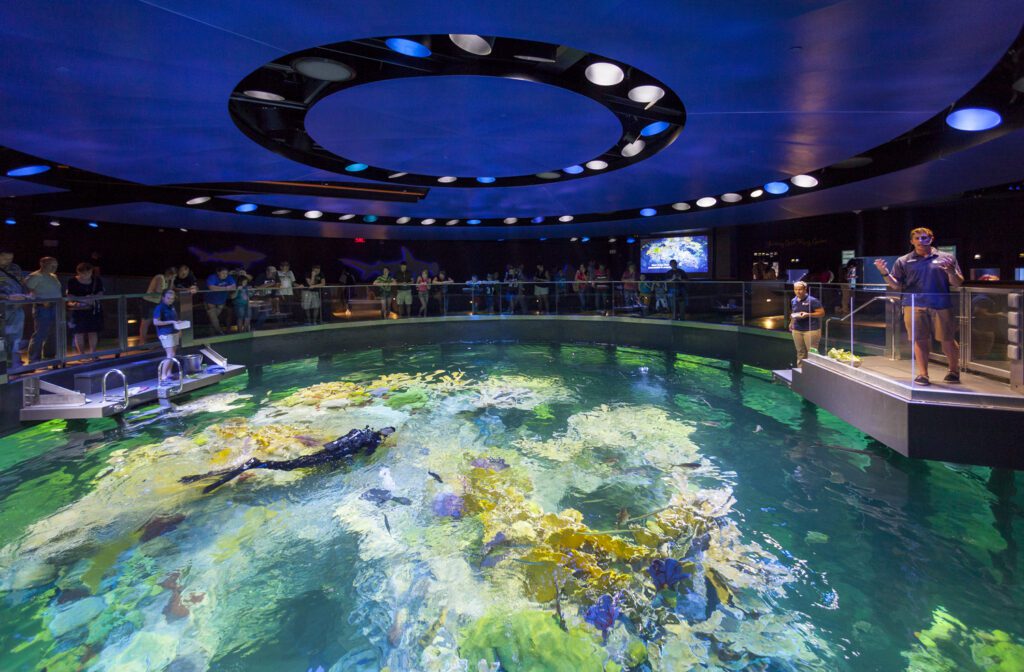
Critically, we are now building for ecosystems outside of our institutions as well, such as with textured seawalls that support and house marine life; indigenous planting at waterside sites; landforms that restore tidal flows providing critical nutrient flows to coastline ecosystems; waterside lighting that is shielded and in long wavelengths less distracting to sea turtles, birds, and insects; and through the use of bird-friendly glass.
Sumi: The work we do with the husbandry staff at these facilities is inspiring. Working with these animal experts is an example of true collaboration. Architects and designers know how to design and build a beautiful, interactive enclosure, but the staff have the expertise on the needs of the wildlife and they help us create a design that is the best for animal welfare. The husbandry staff are the voice of the animals, and help us understand specific needs and requirements over the course of many conversations, where designers and caretakers work together to create a fun, immersive experience for visitors, and create a humane environment that is sustainable for the animals that will live there and the individuals who take care of them.
The science and information for sustainable materials and methods is rapidly changing and it’s our responsibility as architects and designers to stay up to date with the newest information. There is always something new to be discovered and put into practice, and we need to keep this concept at the forefront of our minds when designing.
Q. Aquariums and nature centers do an amazing job combining research and education with fun and entertaining engagement for visitors of all ages. What are some of your favorite examples from low-tech/high-creativity to bigger budgets?
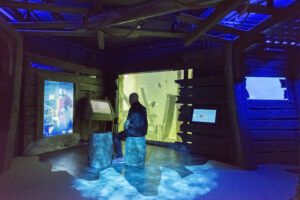
Peter: We were asked by the Audubon [Aquarium] to essentially double the size of their 1M-gallon tank at the Gulf of Mexico exhibit within eight weeks. This was a major challenge, especially considering the limited budget. In order to make the client happy with the outcome and stick to the budget, we developed an entirely new experience by altering the lighting with theatrical water lights, repainting exhibit walls and ceilings and painting exposed mechanical equipment. We used mirrors to expand the size of the tank from the visitor perspective and added interactive media and technology on an LED screen to further enhance the experience.
Technology radically changed everything. We now do not need to design space for a 1M or 2M gallon tank, we can use technology to create an equally exciting experience with far less water and far less fish. It helps with our large animals, too. You no longer need to have an 80-foot shark in a tank, you can use screens, film and animation to create a similar experience with technology.
We use technology to show more than just fish. In North Carolina, we use lighting, sound and immersive tank designs to help visitors experience infamous shipwrecks in the “Graveyard of the Atlantic.” This expands the visitor experience beyond just the animals, infusing technology to create engagement without captivity.
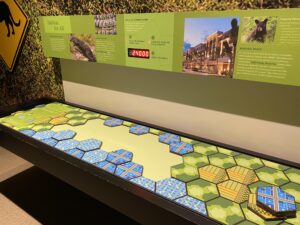
Paul: The Conservancy of Southwest Florida in Naples does a great job at the Dalton Discovery Center of conveying educationally rich exhibits that don’t break the bank. We developed a puzzle-type exhibit that investigates the effects of urban development on the natural habitats of the region’s wildlife. It’s a very fun and interactive game that kids love, and it is packed with educational content that teaches young visitors how to think about some very big issues like where to build buildings and where to put roads. The exhibit itself is very colorful and fun and it has a smart component to it, so when visitors make their decisions, there are RFID chips in the pieces that inform them with a series of lights of the effect their designs are having on the region.
Q. What can you tell us about the evolution of design changes that you’ve personally seen?
Peter: My first project was the National Aquarium in Baltimore, and I worked on other major aquariums like the Tennessee Aquarium, Ring of Fire Aquarium, Oceanário do Lisboa and the Genoa Aquarium. These projects were designed as part of mixed-use developments and as attractions for the public. These facilities were designed as experiences to entertain a larger number of visitors and hold a larger number of animals.
These aquariums were designed to be humane facilities, but the purpose of them was to entertain. We designed these facilities to hide the life support systems, the behind-the-scenes care for the animals; we wanted the visitors to only see a very specific experience. Now, we have moved away from this to include these aspects of facilities. Animal care, water systems, tank maintenance and more are now a part of the “show.”
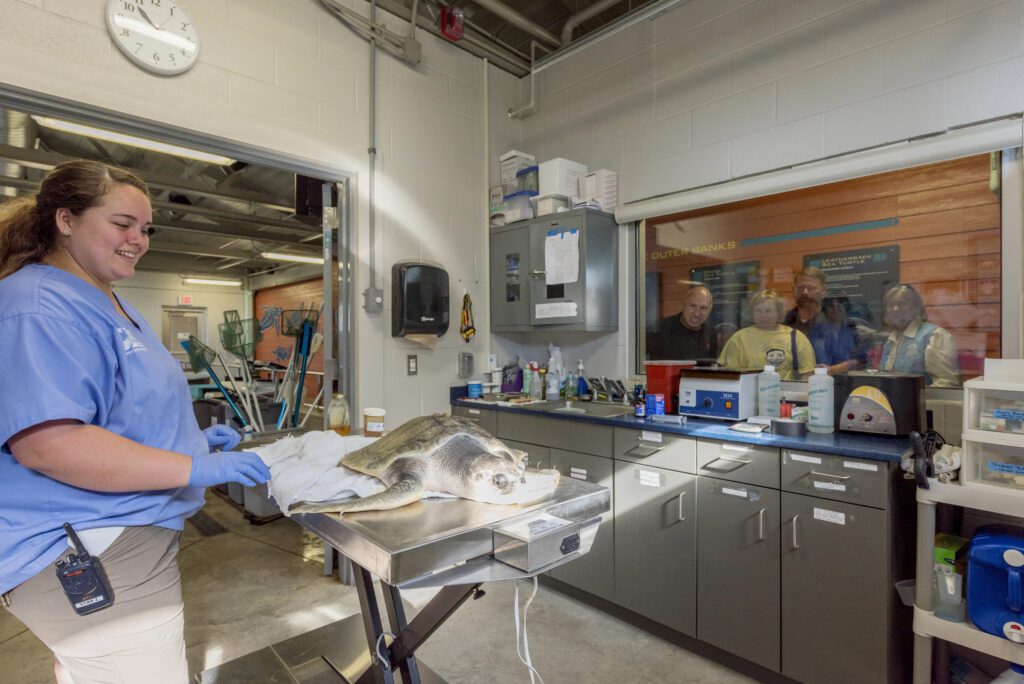
Fundamentally, these aquariums have become about the visitors’ experience with the animals and the people who take care of them, which is the community of the aquarium. We design STEM engagement activities and opportunities that cater to community groups and events. Because aquariums now focus more on conservation, husbandry and sustainability, they use these themes to be more flexible and responsive to community needs.
Sumi: I’m newer to the aquarium world, but when developing the Audubon Insectarium and Aquarium, we help revitalize the “Down the Bayou” experience, drawing attention to this ecosystem that features unique habitats, wildlife and human communities full of multi-generational fishing families and shrimp fishermen. These exhibits use interesting graphics to draw attention to the conservation of these special, ocean-centered communities. The stories of the residents tell of preserving the culture of these areas, and the animals at Audubon are ambassadors for the protection of the ecosystems they came from. It’s incredibly interesting because while the ocean and ocean life have a major impact on these habitats, there is a bigger story to tell than just the fish.
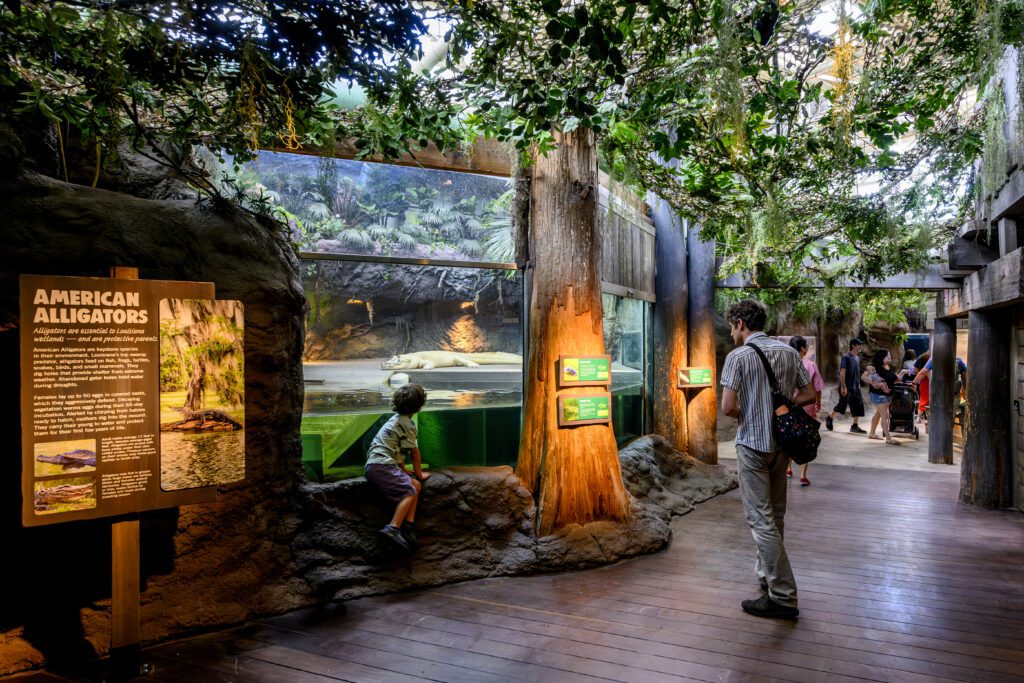
Q. What’s your favorite aquatic animal and why?
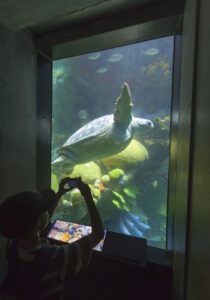
Peter: Mine is an angelfish. They are quite beautiful and handsome and remind me that there are bright spots even on dark days.
Justin: Myrtle the Turtle, the iconic resident of the New England Aquarium who dealt with the GOT renovation with dignity and grace.
Sumi: I would have to say either penguins or diving beetles, which I didn’t know existed until my work with Audubon. They are so fun to watch.
Sharon: That’s a hard one! If I have to choose, I’ll go with octopus. The way they move their bodies, their ability to camouflage, and their intellectual intelligence all captivate me.
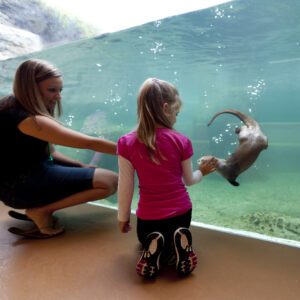
Paul: I would have to say that my favorite aquatic animal is the North American River Otter. They are an amazing creature that does everything that children and families want to see. They are incredibly active, and their habitats consist of a wonderful variety of features. They have both dry areas (land) and wet areas (pools and rivers) and they use them all. They are phenomenal swimmers and can be quite acrobatic. I once witnessed some great interactions with children at the otter exhibit that we design at the Museum of Discovery and Science in Fort Lauderdale. The otters were interacting with visitors and following their motions as they waved their hands around. It made for some amazing memories for those families and for me!
How aquariums are using their public presence to influence change for good and promote ocean conservation globally.
View PostHow aquariums are making their conservation and sustainability actions the theme of exhibits and vital components of their architecture.
View Post